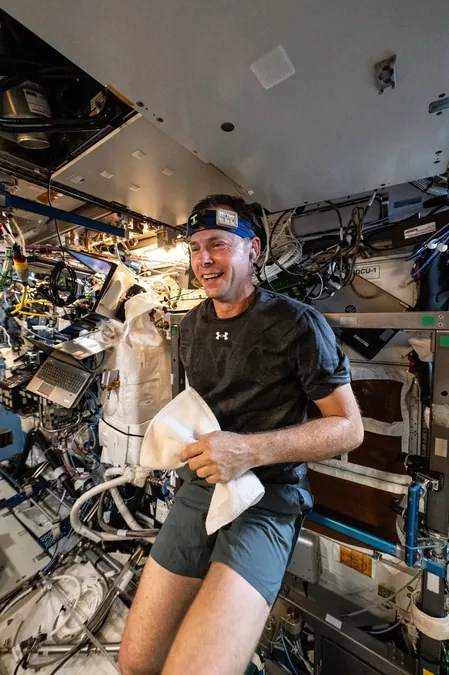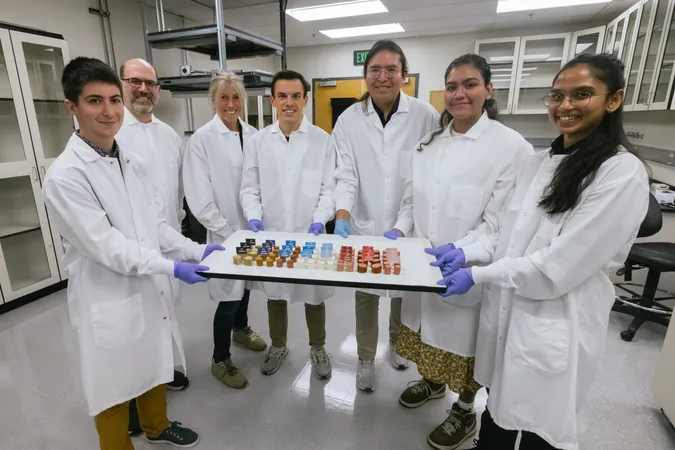
Revolutionary Wearable Tech Transforming Space Research
2024-11-13
Author: Charlotte
In an era where keeping track of our health has become more accessible than ever, wearable technology is taking on a whole new significance, especially in the realm of space exploration. From heart rate monitors to sleep trackers, these devices are not only helping us make informed health choices on Earth but also providing vital data for scientific research aboard the International Space Station (ISS).
The Impact of Spaceflight on Body Temperature
Recent studies highlight the unique challenges that spaceflight poses on our bodies, particularly in regulating core temperature and maintaining daily rhythms. The European Space Agency (ESA) is currently conducting an innovative study called Thermo-Mini (T-Mini), which employs a non-invasive headband monitor. This groundbreaking device offers hours of data on how astronauts manage their core temperature in the microgravity environment of space, factoring in external conditions like temperature and humidity.
Previous investigations have shown that astronauts experience a rapid rise in core temperature during exercise, which persists even during rest. This finding not only raises questions about our assumed thermoregulatory set points but also has implications for how humans might adapt to climate change here on Earth.
Rethinking Sleep in Zero Gravity
Spaceflight brings about significant disruptions to sleep patterns, making the quality and quantity of sleep a critical area of research. The Actiwatch Spectrum, a wrist-worn device capable of measuring motion and ambient light, has provided insights into the astronaut's sleep experience. Data has consistently shown that astronauts sleep considerably less while in orbit, prompting further studies into the effects of light exposure on circadian rhythms. Scientists are now actively developing lighting systems aimed at mitigating these negative effects and fostering better sleep habits during missions.
A new advancement, a lightweight vest embedded with sensors, offers the potential for monitoring heart rate and breathing patterns during sleep without disturbing astronauts. This technology not only may improve the health of astronauts on long missions but could also have promising applications in treating sleep disorders here on Earth.
The Danger of Carbon Dioxide Buildup in Space
In enclosed environments like spacecraft, the buildup of carbon dioxide (CO2) can pose serious health risks, from dizziness to headaches. Personal CO2 monitors, designed to be worn on clothing, are currently being tested to better track the carbon dioxide levels in an astronaut's immediate surroundings. These devices could play a vital role in ensuring crew health by providing real-time data about air quality in confined spaces.
Monitoring Radiation Exposure with Precision
Radiation exposure is another critical concern for astronauts. The Canadian Space Agency (CSA) has introduced the EVARM study, utilizing pocket-sized wireless dosimeters to provide real-time measurements of radiation exposure during spacewalks. This technology enables researchers to pinpoint areas of potential high exposure and adjust protective measures accordingly.
ESA’s Active Dosimeter is another innovation, measuring radiation changes against various factors such as the space station's orbit and solar activity. In fact, this device was also tested on NASA's Artemis I mission, which successfully orbited the moon in 2022, demonstrating its versatility and importance for future exploration.
Additionally, the AstroRad Vest has been designed to provide astronauts protection against solar particle events. Ongoing research into these wearable devices will lead to enhanced safety protocols for missions to the Moon and possibly beyond.
Conclusion
The integration of wearable technology in space research is transforming how we understand human health in extreme conditions. The International Space Station is not only a platform for conducting crucial experiments but also serves as a proving ground for technologies that will pave the way for future explorations. As we look ahead to missions to the Moon and Mars, these innovations could be vital in ensuring the well-being of astronauts as they embark on humanity's next frontier in space travel. Discover the future of space exploration—these advancements are just the beginning!









 Brasil (PT)
Brasil (PT)
 Canada (EN)
Canada (EN)
 Chile (ES)
Chile (ES)
 España (ES)
España (ES)
 France (FR)
France (FR)
 Hong Kong (EN)
Hong Kong (EN)
 Italia (IT)
Italia (IT)
 日本 (JA)
日本 (JA)
 Magyarország (HU)
Magyarország (HU)
 Norge (NO)
Norge (NO)
 Polska (PL)
Polska (PL)
 Schweiz (DE)
Schweiz (DE)
 Singapore (EN)
Singapore (EN)
 Sverige (SV)
Sverige (SV)
 Suomi (FI)
Suomi (FI)
 Türkiye (TR)
Türkiye (TR)